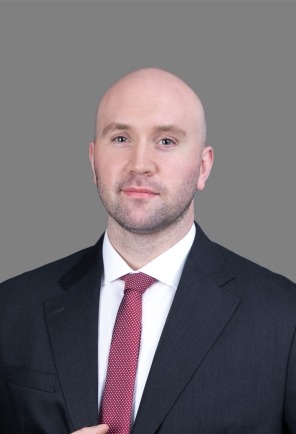Crypto Savvy: The Essentials – Crypto Fraud, Corruption, and Insolvency
Fraud, Corruption and Insolvency in the Crypto Space
At the Hong Kong FinTech Week this year, HashKey Group’s Walter Jennings invited Alvarez & Marsal’s (A&M’s) Henry Chambers and Jay Kim to speak on HashKey’s Crypto Savvy podcast series about cryptocurrency in fraud, corruption and the challenges of dealing with new and rapidly changing regulatory requirements in this space. Henry leads A&M’s cryptocurrency and digital asset practice in Asia and Jay leads A&M’s data analytics practice in Asia.
“In our Disputes and Investigations team, our take in relation to crypto is looking at three key areas - disputes, investigations and compliance in the crypto space,” said Henry.
Compliance
A&M’s Disputes & Investigations team assists cryptocurrency platforms and market participants deal with regulatory and related matters both proactively and reactively. Henry notes that “We have helped crypto exchanges with their compliance requirements. Clearly, the cryptocurrency regulatory space is a very fast-moving and growing area. Firms like ours often work in conjunction with law firms to assist crypto exchanges proactively in dealing with their compliance challenges, making sure that they are playing within the boundaries of the regulatory regime (to the extent they exist), whether it’s in Hong Kong or elsewhere”. A&M’s DI team can also assist in a reactive manner by “responding to the regulator and dealing with their requests.”
Investigations
When it comes to investigations, data analytics comes into play when dealing with the tracing of cryptocurrency transactions, for example in fraud matters, or when money has been misappropriated. A&M can perform an asset tracing analysis – “we can look at wallet addresses, transaction IDs; we can search the public blockchain to look for the assets and try to uncover the facts around the case.”
Henry explains that “just because something has gone into cryptocurrency, it’s not the end of the story, it’s not lost forever, you can follow that trail of transactions with various techniques to try and identify the assets.”
Henry notes that “The public blockchain is pseudo-anonymous. While there are wallet addresses, they may not be tied to specific individuals. You use heuristics to understand what wallets are associated with each other and where assets may have come from. There are tools that help us visualise transaction flows and help us trace where the funds went.”
Asked whether work involving crypto is any different to traditional asset tracing, Henry reveals that “it’s not that different. The modalities that people use to commit fraud, undertake corrupt transactions and where we see insolvency is analogous to what we see in traditional finance. What is different is the terminology and how the underlying technology works, but technically it’s still value moving from party to party, and whether that’s crypto or bags of cash, we would still take the same kind of investigative process. We need to be able to adapt and understand how to apply these innovative technologies to matters like investigations, disputes, and insolvency cases.”
With more cryptocurrency scams such as the Squid Game rug-pull, “rug-pulls are a big issue in the crypto industry,” admits Henry. Essentially, you’ve got an exchange, project or some token capital raise promoted with a big blast and raising a whole bunch of capital. Potentially, you could be the subject of a rug-pull and before you know it, the founders are gone, all your contact points are gone, and you’re just left carrying the bag. You have to consider all the potential red flags to avoid these rug-pulls.”
Corruption
“We have also started seeing more corruption in the crypto sphere, such as the case involving Zimbabwe’s cricket team coach who was found guilty of receiving USD35,000 worth of Bitcoin in exchange for betting information that would help a syndicate. People are using crypto for corruption because it is complex, perceived as difficult to follow and has potential for transferring large amounts of money without the infamous bags of cash.”
To pre-empt fraud and corruption, A&M can investigate the risk level of wallets and whether any of the wallet addresses come from the dark web. “We do this by mapping out various data points on the blockchain to figure out the risk level of wallet addresses. This helps us monitor and identify suspicious wallet transactions.”
For investors looking to invest in a crypto platform, exchange or digital asset project, Henry outlines three key points to consider in order to protect themselves:
- Make sure you fully understand the project you are looking to invest in, and the risks associated with that project. Do the risk assessment yourself and examine what could go wrong.
- Be aware of the most common crypto scams. If it does not pass the sniff test, think about whether you want to go ahead with the investment.
- Finally, understand the custody of this asset – do you hold the token, is the token held by the company, or is there some third party in the middle holding it? Who is actually holding that token? This should be part of your general due diligence.
Asked what a crypto project founder can do to safeguard assets from scammers and fraudsters, A&M recommends:
- Making sure security is a core pillar
- Exercising professional scepticism in assessing proposals, hire staff with caution, be careful who you trust
- When in doubt, consulting an advisor like A&M who can guide you on the best practices to avoid these scams.

